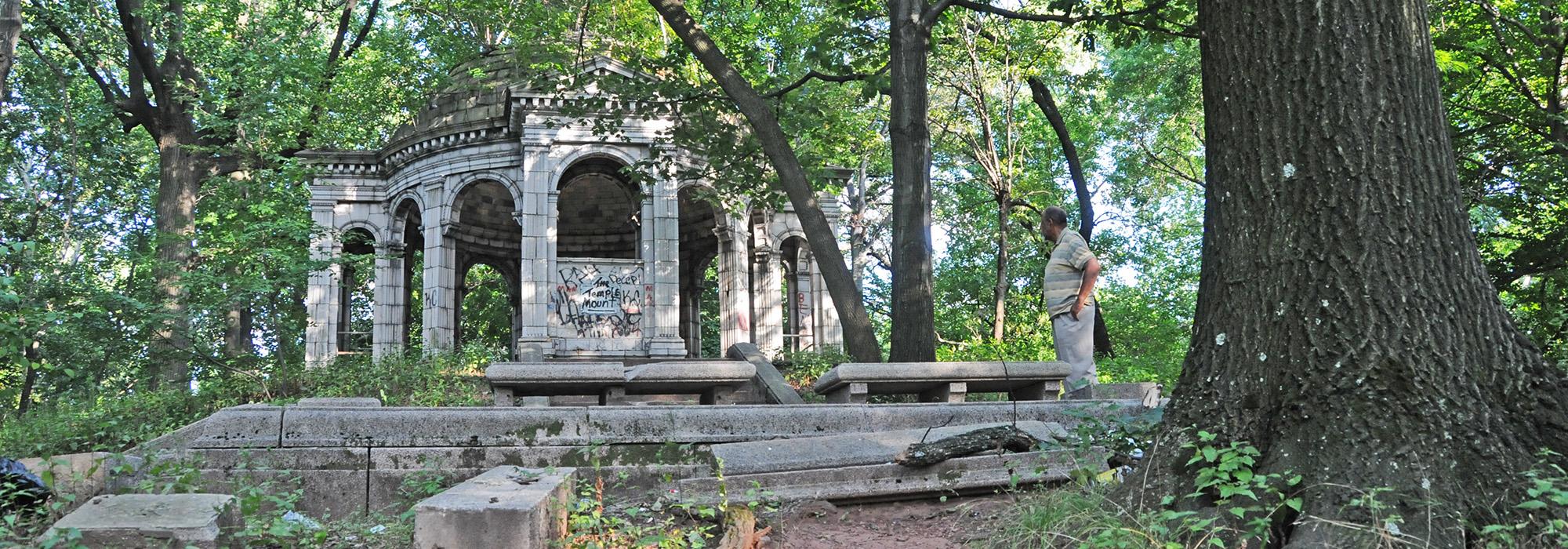Call for Nominations for Landslide® 2022: The Olmsted Design Legacy – Report and Exhibition from The Cultural Landscape Foundation
Media Contact: Nord Wennerstrom | T: 202.483.0553 | M: 202.255.7076 | E: nord@tclf.org
Bicentennial of Frederick Law Olmsted, Sr.’s birth in 2022 focuses attention on Olmsted-designed landscapes that are threatened and at-risk
Washington, D.C. (February 15, 2022) – The Cultural Landscape Foundation (TCLF) today announced a call for nominations for Landslide, the foundation’s annual thematic report about threatened and at-risk landscapes. Landslide 2022: The Olmsted Design Legacy, timed to the bicentennial of the birth of Frederick Law Olmsted, Sr. (1822-1903), widely hailed as the father of landscape architecture, will focus on landscapes designed by Olmsted, Sr. and his successor firms that are now threatened or at-risk. The more than century-long Olmsted legacy begins in the mid-1850s with the work of Olmsted Sr., and continues with John Charles Olmsted (1852-1920), and Frederick Law Olmsted, Jr. (1870-1957). The report will be complemented by an online exhibition that will include newly commissioned photographs and historical images, site plans, other archival materials, and video interviews. The deadline for nominations is June 17, 2022. Questions or Landslide nominations can be submitted to Nord Wennerstrom at nord@tclf.org. >Download the Nomination Form Landscape Architecture Magazine is the Landslide media partner.
Landslide is one of TCLF's principal education and advocacy initiatives and a primary effort is the foundation’s annual thematic Landslide report about cultural landscapes that are threatened and at-risk. The Landslide program’s goal is to draw immediate and lasting attention to threatened sites by making them more visible, revealing their value, and promoting public engagement in the form of advocacy and stewardship.
Frederick Law Olmsted, Sr., defined and named the profession of landscape architecture and designed many of America's most beloved nineteenth-century parks and landscapes, including New York's Central Park, Brooklyn's Prospect Park, Ashville, N.C.’s Biltmore Estate, and the U.S. Capitol grounds in Washington, D.C. His commitment to public works stemmed in part from his abolitionist stance: by creating elegant and equitable public spaces for all, he hoped to demonstrate the inherent beauty possible in a free society. But he and his successor firms are also responsible for wide range of projects from private residences to campuses, along with parkways, urban park systems in Atlanta, Boston, Seattle, and elsewhere, national parks, roadways, state capitols, planned communities, libraries, hospitals, and many others. There are more than 200 Olmsted designed landscapes listed in the National Register of Historic Places, and several dozen as National Historic Landmarks. The Frederick Law Olmsted Papers and Olmsted Associates Records at the Library of Congress contain more than 173,000 items including business correspondence and reports, newspaper clippings, drawings, photographs, and other materials.
“During the past four decades the name Olmsted has become synonymous with greatness in the art of landscape architecture, and Olmsted-designed landscapes are internationally known centerpieces of civic pride,” said Charles A. Birnbaum, TCLF’s president and CEO. “However, the Olmsted pedigree is not an insurance policy against ineffective and/or ill-advised stewardship decisions. During this bicentennial of the birth of Frederick Law Olmsted, Sr., Landslide 2022 aims to make visible those Olmsted firm-designed landscapes that are below the radar or largely unrecognized today as well as to further inspire improved stewardship of better-known places that may be suffering from neglect or insufficient support.”
About Landslide
The goal of Landslide, one of TCLF’s four core programs, is to draw immediate and lasting attention to threatened landscapes and unique features. Through web-based news stories, traveling exhibitions, and print publications, Landslide reveals the value of these often-forgotten landscapes. By creating an interactive, online resource, Landslide directs the public to local advocates working to safeguard each site. While many Landslide properties have been saved, such as Nashville, TN’s Civil War-era Fort Negley Park and the Frick Collection’s Russell Page-designed garden on East 70th Street in New York City, others remain at risk or have been lost altogether.
About Landscape Architecture Magazine
Founded in 1910, Landscape Architecture Magazine (LAM) is the monthly magazine of the American Society of Landscape Architects. It is the magazine of record for the landscape architecture profession in North America, reaching more than 60,000 readers who plan and design projects valued at more than $140 billion each year. LAM is available in both print and digital formats by subscription and may also be found each month in more than 700 bookstores across the United States and Canada.
About Olmsted 200
Olmsted 200 is managed by the National Association for Olmsted Parks, along with founding partners the American Society of Landscape Architects, The Garden Club of America, Frederick Law Olmsted National Historic Site, City Parks Alliance, National Recreation and Park Association, The Cultural Landscape Foundation, The Trust for Public Land, American Public Health Association, and the Landscape Architecture Foundation.
About The Cultural Landscape Foundation
The Cultural Landscape Foundation (TCLF), is a 501(c)(3) non-profit founded in 1998 to connect people to places. TCLF educates and engages the public to make our shared landscape heritage more visible, identify its value, and empower its stewards. Through its website, publishing, lectures, and other events, TCLF broadens support and understanding for cultural landscapes. TCLF is also home to the Cornelia Hahn Oberlander International Landscape Architecture Prize.



